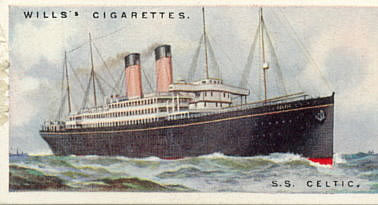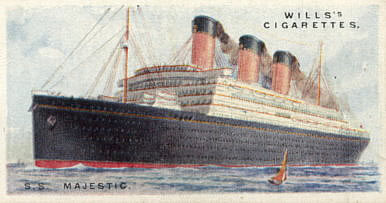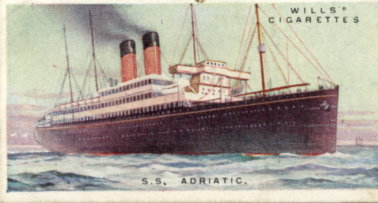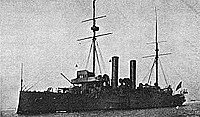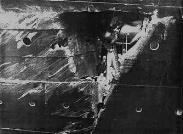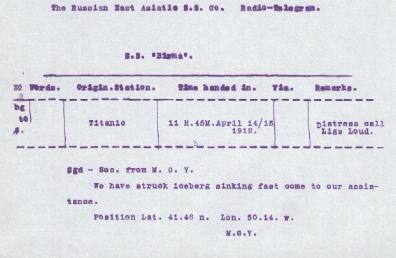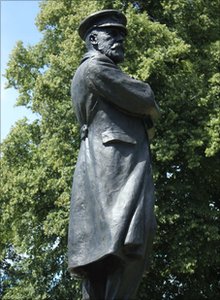RMS TITANIC | Ship of Dreams
Harland & Wolff
Ships
|
|
|
|
Cunard Ships: |
|
Titanic Personalities
|
Captain Edward John Smith
Captain EJ Smith was born on 27 th January 1850. His parents were Edward and Catherine Smith. They lived in Hanley, Stoke on Trent, England . He attended Etruria Country Primary School . In 1867, at the age of 17, he began an apprenticeship on the clipper “Senator Weber” for the sailing firm of Andrew Gibson & Co in Liverpool. He gained his 2nd mate's certificate on 12th August 1871 and his 1st mate's certificate on 8th April 1873. Smith finally gained his master's ordinary certificate on 26th May, 1875, at the age of 25. He was given his first command the 1040 ton sailing ship Lizzie Fennell, in 1876 and spent the next couple of years transporting cotton and assorted goods to Britain from southern U.S. ports such as Savannah and Galveston.
His career with the White Star Line commenced in March 1880 as the fourth officer on the SS Celtic. His progression up the ladder was fast and exemplary. In 1887, Captain Smith received his first White Star command, the SS Republic. In 1888 he joined the Royal Naval Reserve, and because he had a Master's Certificate, he was qualified as a full Lieutenant, and received the right to have the letters “R.N.R.” after his name and under warrant #690 permitted him to fly the “ Blue Ensign” from any merchant vessel under his command. He married Sarah Eleanor Pennington and had one daughter Helen Melville Smith. Helen was born in 1898.
In 1895 Captain Smith was given command of the RMS Majestic and remained her captain for nine years. During the Boer War (1899-1902) the Majestic transported troops to South Africa . In 1903 Captain Smith was awarded the Transport Medal showing the “ South Africa clasp” . By the turn of the Century, the White Star Line awarded him the command of their greatest ships. His wage was £1,250 per year which made him the highest paid captain on the sea. In 1904, he was given command of the largest ship in the world at the time, White Star's new RMS Baltic . Her maiden voyage from Liverpool to New York , sailing 29 June 1904, went without incident. After three years with the Baltic , Smith was given his second new "Big Ship", the RMS Adriatic . Once again, the maiden voyage went without incident.
During his command of the Adriatic , Smith received the Royal Naval Reserve's " Long Service" medal along with a promotion at White Star to Commander. He would now sign his name as "Commander Edward John Smith, R.D., R.N.R.", with "R.D." meaning "Reserve Decoration." He now had two medals which later photographs show him wearing them. Following the birth of the “giant” RMS Olympic, Captain Smith was the obvious choice for commander. From May 1911 until March 1912 he would command the biggest ship the world had ever seen up until then. All the commands which Captain Smith had undertaken had run smoothly. There had never been an incident until 20 th September 1911 . The RMS Olympic, under his command, collided with the HMS Hawke. The subsequent enquiry into the accident blamed the Olympic because of her massive size generated a great suction that pulled the HMS Hawke into her size. Financially it was a disaster for the White Star line. The hull and propeller were severely damaged so Titanic's propellers were used as replacements. The completion of the Titanic was therefore delayed at a great cost to the White Star Line.
Following repairs, the RMS Olympic returned to sea but in February 1912, she lost a propeller blade and once again returned to her builder for emergency repairs. To get her back to service immediately, Harland & Wolff yet again had to pull resources from Titanic, delaying her maiden voyage from 20 March to 10 April. The incidents had tarnished Captain Smith's record of achievement. He had stated on the 16 th May 1907 that “I [have] never seen a wreck and have never wrecked, nor was I ever in any predicament that threatened to end in disaster of any sort” All that had changed. Perhaps he spoke too soon. Not only did the RMS Olympic collide with the HMS Hawke but five years later many lives would be lost with the Titanic (although Captain Smith was not entirely to blame). From 1 st April 1912, Captain Smith took command of the Titanic and over saw her trials. He took with him Chief Officer Henry T Wilde from the Olympic which caused a stir amongst other Titanic Officers. Hopefuls like Murdoch and Lightoller had to be demoted to first and second officers. Second Officer Blair left the Titanic's company altogether (but with hindsight he was probably pleased). Captain Smith always had a routine. Each morning at 10 am he would meet with department heads and take their reports. By 10.30 he would be ready, complete in full uniform to tour the ship from the 1 st class dining room to the engine rooms. At 11.40 pm on 14 th April 1912 the Titanic struck an iceberg. Captain Smith was off duty at the time and in his cabin asleep. He awoke to the sound of engines stopping. First Officer Murdoch was on watch on the bridge. Captain Smith joined Murdoch and was given the report. He consulted Thomas Andrews who carried out a site investigation and calculated the life expectancy of the doomed liner. Captain Smith ordered the wireless operators to send the CQD signal of distress and ordered the rockets to be fired.
How Captain Smith met his end is highly debatable. Some accounts (the most credible) witnessed Smith returning to the bridge moments before the bridge went under then sea and went down with his ship. Other accounts say he was thrown from the ship and seen rescuing a child and then returning to the ship. Unfavourable accounts tell Captain Smith taking his own life with a gun. There are many memorials dedicated to Captain Smith. At Litchfield, there is a larger than life bronze statue of him which was unveiled by his daughter Helen Melville Smith on the 29th July 1914. It was unveiled at the western end of the Museum Gardens in Beacon Park. The inscription reads: COMMANDER
|

